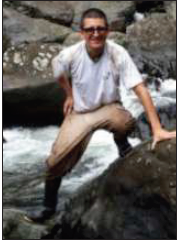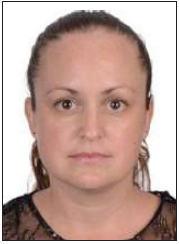Verificación de datos de tala ilegal mediante herramientas geoespaciales
Main Article Content
Abstract
Las tecnologías geoespaciales son ampliamente utilizadas en procesos gubernamentales de gestión territorial. Su creciente disponibilidad en los países del hemisferio sur amerita la formación de recursos humanos calificados para evitar riesgos en las acciones institucionales de control por errores u omisiones que determinen litigios con los regulados. Como ejemplo, fue analizado el proceso sancionatorio 027-2015 de la Autoridad Ambiental Nacional (AAN) de Ecuador, que identificó aumento de la frontera agrícola por tala no autorizada en el Área de Amortiguamiento de la Reserva Ecológica El Ángel. Se planteó verificar la referencia espacial de los datos de ubicación obtenidos por la AAN y la delimitación del área de afectación ambiental, con la hipótesis de sobredimensionamiento. Con el uso de herramientas CAD, GIS, Google Earth y técnicas como fotointerpretación, georeferenciación y replanteo de coordenadas in situ, se llegó a determinar que el área de la afectación señalada por la AAN en 0,68 hectáreas (ha) fue sobredimensionada en 0,3785 ha (55,04 %) mientras que 0,3092 ha (44,96 %) si fueron deforestadas Se asume que las coordenadas obtenidas por la AAN no muestran el área real de afectación debido a probables errores humanos, instrumentales o ambientales en la toma datos. Las tecnologías geoespaciales se han convertido en cruciales en todos los niveles de gobierno y su uso requiere conocimientos especializados que favorecerán con menos errores y mayor efectividad en las tareas de regulación y control efectuadas por las instituciones gubernamentales.
Downloads
Article Details
Los autores que publican en esta revista están de acuerdo con los siguientes términos:
- Los autores conservan los derechos de autor y garantizan a la revista el derecho de ser la primera publicación del trabajo al igual que licenciado bajo una Creative Commons Attribution License que permite a otros compartir el trabajo con un reconocimiento de la autoría del trabajo y la publicación inicial en esta revista.
- Los autores pueden establecer por separado acuerdos adicionales para la distribución no exclusiva de la versión de la obra publicada en la revista (por ejemplo, situarlo en un repositorio institucional o publicarlo en un libro), con un reconocimiento de su publicación inicial en esta revista.
- Se permite y se anima a los autores a difundir sus trabajos electrónicamente (por ejemplo, en repositorios institucionales o en su propio sitio web) antes y durante el proceso de envío, ya que puede dar lugar a intercambios productivos, así como a una citación más temprana y mayor de los trabajos publicados.
How to Cite
References
Balla, D., & Zichar, M. (2014). Geovisualization of domestic nature conservation areas using KML. 9th International Conference on Applied Informatics Eger. Hungary, 185–193.
Ballagh, L. M., Raup, B. H., Duerr, R. E., Khalsa, S. J. S., Helm, C., Fowler, D., & Gupte, A. (2011). Representing scientific data sets in KML. Computers & Geosciences, 37(1), 57–64.
Basterra, I. (2011). Cátedra de Fotinterpretación.
Castellanos-Castro, C., & Bonilla, M. A. (2011). Grupos Funcionales de Plantas con Potencial Uso para la Restauración en Bordes de Avance de un Bosque Altoandino. Acta Biologica Colombiana, 16(1), 153–174.
Dawwas, E. (2014). The Evolution of GIS as a Land Use Planning Conflict Resolution Tool: A Chronological Approach. American Journal of Geographic Information System, 3(1), 38–44. https://doi.org/10.5923/j.ajgis.20140301.04
Deon, R., Serrouya, R., & Kochanny, C. (2002). GPS radiotelemetry error and bias in mountainous terrain. Wildlife Society Bulletin, 30(2), 430–439. https://doi.org/10.2307/3784501
Dixon, B., & Uddameri, V. (2016). GIS and Geocomputation for Water Resource Science and Engineering. In GIS and Geocomputation for Water Resource Science and Engineering. https://doi.org/10.1002/9781118826171
El-Rabbany, A. (2002). Introduction to GPS. Artech House. http://www.ghbook.ir/index.php?name=فرهنگ و رسانه های نوین&option=com_dbook&task=readonline&book_id=13650&page=73&chkhashk=ED9C9491B4&Itemid=218&lang=fa&tmpl=component
Elmes, G., Roedl, G., & Conley, J. (2014). Forensic GIS (G. Elmes, G. Roedl, & J. Conley (eds.)). Springer. https://doi.org/10.1007/978-94-017-8757-4
ESRI. (2016). ¿Qué son las proyecciones cartográficas —Ayuda ArcGIS for Desktop. http://desktop.arcgis.com/es/arcmap/10.3/guide-books/map-projections/what-are-map-projections.htm
ESRI. (2019). Información general sobre el conjunto de herramientas Proyecciones—Ayuda Documentación. Información General Sobre El Conjunto de Herramientas Proyecciones. https://desktop.arcgis.com/es/arcmap/latest/tools/coverage-toolbox/define-projection.htm
Flores, F., Araque, F., Entrena, M., & Aguilar, R. (2013). Capacitación en Geomática para el personal del sector público en Venezuela Artículos. GEOENSEÑANZA, 18, 81–89. http://webcache.googleusercontent.com/search?q=cache:AHZWoE8pxNAJ:www.saber.ula.ve/bitstream/handle/123456789/42268/articulo_5c.pdf%3Fsequence%3D2%26isAllowed%3Dy+&cd=1&hl=es-419&ct=clnk&gl=ec&client=firefox-b-d
Hurtares, W., Chilán, K., Solórzano, I., & Santos, E. (2011). Trazado y Replanteo del Proyecto Horizontal de una carretera utilizando Estación Total. Research Gate, 1. https://www.researchgate.net/publication/277985741_Trazado_y_replanteo_del_proyecto_horizontal_de_una_carretera_utilizando_estacion_total_caso_practico_camino_vecinal_la_chorera_km_0000_-_2187
Jiang, W., & Li, J. (2014). The effects of spatial reference systems on the predictive accuracy of spatial interpolation methods. 33. https://pdfs.semanticscholar.org/6e70/fe533372a4bcaf647533425cb85a839b17f1.pdf
Malczewski, J., & Rinner, C. (2015). Multicriteria Decision Analysis in Geographic Information Science. In Springer (Ed.), Analysis methods (Issue Massam 1993). https://doi.org/10.1007/978-3-540-74757-4
Ministerio del Ambiente. (2015). Plan de Manejo Reserva Ecológica El Ángel. In Latindex (Vol. 1). http://suia.ambiente.gob.ec/documents/10179/242256/24+PLAN+DE+MANEJO+EL+ANGEL.pdf/134234ba-a47d-459c-956b-37b0155df002
Mohammed, N. Z., Ghazi, A., & Mustafa, H. E. (2013). Positional accuracy testing of Google Earth. International Journal of Multidisciplinary Sciences and Engineering, 4(6), 6–9. http://www.ijmse.org/Volume4/Issue6/paper2.pdf
Muñiz, O., Demirci, A., & Schee, J. van der. (2015). Geospatial Technologies and Geography Education in a Changing World. Geospatial Practices and Lessons Learned (O. Muñiz, A. Demirci, & J. van der Schee (eds.)). https://doi.org/10.1007/978-4-431-55519-3
Obermeyer, N. J., Ramasubramanian, L., & Warnecke, L. (2016). GIS Education in U. S. Public Administration Programs: Preparing the Next Generation of Public Servants. Journal of Public Affairs Education, 22(2), 249–266. https://doi.org/10.1080/15236803.2016.12002244
Pánek, J. (2015). Geographic Information Systems in Developing Countries – What are the Ethical Issues we need to be aware of ? / Geografické Informační Systémy A Jejich Využití V Rozvojových Zemích - Jakým Etickým Otázkám Musíme Čelit? GeoScience Engineering, 59(2), 40–48. https://doi.org/10.2478/gse-2014-0052
Peñafiel, J., & Zagas, J. (2001). Fundamentos del sistema gps y aplicaciones en la topografia. In Colegio Oficial de Ingenieros Tecnicos en Topografia.
Rey Navas, F. I. (2017). Pertinencia del testigo experto, testigo perito y testigo de refutación en la teoría del caso. Revista de Derecho Principia Iuris, 15. revistas.ustatunja.edu.co › index.php › piuris › article › download
Rodríguez Pérez, J., Álvarez Taboada, M., Sanz Ablanedo, E., & Gavela, A. (2006). Comparison of GPS receiver accuracy and precision in forest environments. Practical recommendations regarding methods and receiver selection. XXIII International FIG Congres, 1–16. https://www.mendeley.com/reference-manager/reader/d87eed0e-e659-3df8-a16f-c283b1d7ac86/6a40d874-106e-ec4b-6f1d-7e4c1be22b9f
Roedl, G., Elmes, G. A., & Conley, J. (2014). Geospatial Technologies in the Courtroom. In Forensic GIS (p. 314). Springer.
Schwieger, V. (2003). Using Handheld GPS Receivers for Precise Positioning. 2nd FIG Regional Conference, February, 1–16.
Selkin, P. (2016). Google Earth and Geoscience Education. Teach the Earth. http://serc.carleton.edu/NAGTWorkshops/visualize04/tool_examples/google_earth.html
Serrato, P. (2018). Conceptos Basicos De Interpretacion De Aerofotografías E Imágenes SatelitaleS. https://doi.org/. DOI: 10.13140/RG.2.2.18697.08809
Tachiki, Y., Yoshimura, T., Hasegawa, H., Mita, T., Sakai, T., & Nakamura, F. (2005). Effects of polyline simplification of dynamic GPS data under forest canopy on area and perimeter estimations. Journal of Forest Research, 10, 419–427.
Thin, L. N., Ting, L. Y., Husna, N. A., & Husin, M. H. (2016). GPS systems literature: Inaccuracy factors and effective solutions. International Journal of Computer Networks and Communications, 8(2), 123–131. https://doi.org/10.5121/ijcnc.2016.8211
Wing, M. G., Solmie, D., & Kellogg, L. (2004). Comparing Digital Range Finders for Forestry Applications. Journal of Forestry, 102(4), 16–20. https://doi.org/10.1093/jof/102.4.16
Yamaguchi, S., & Tanaka, T. (2006). GPS standard positioning using Kalman filter. SICE-ICASE International Joint Conference, 1351–1354. https://doi.org/10.1109/SICE.2006.315572.
Yoshimura, T., Gandaseca, S., Gumus, S., & Acar, H. (2002). Evaluating the accuracy of GPS positioning in the forest of the Macka regio. The Second National Black Sea Forestry Congress Proceedings 1, 62–69.
Zhen, L., Jing, C., & Chen, X. (2012). Files’ conversion from CAD to GIS using spatial data conversion tools provided by FME. Proceedings - 2012 International Conference on Computer Science and Service System, CSSS 2012, 1939–1942. https://doi.org/10.1109/CSSS.2012.484



